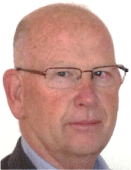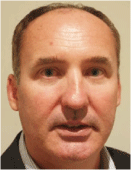CO2-EOR+ in Australia: achieving low-emissions oil and unlocking residual oil resources
Eric Tenthorey A C , Ian Taggart B , Aleksandra Kalinowski A and Jason McKenna BA Geoscience Australia, GPO Box 378, Canberra, ACT 2601, Australia.
B GeoGem Consultants, Unit 20, 5 Spyglass Grove, Connolly, WA 6027, Australia.
C Corresponding author. Email: Eric.Tenthorey@ga.gov.au
The APPEA Journal 61(1) 118-131 https://doi.org/10.1071/AJ20076
Submitted: 14 January 2021 Accepted: 25 February 2021 Published: 2 July 2021
Journal Compilation © APPEA 2021 Open Access CC BY
Abstract
The petroleum industry, through the production and consumption of oil and gas, contributes to global greenhouse gas emissions. However, the industry’s leadership and experience in underground injection and storage of CO2, especially through CO2 enhanced oil recovery (CO2-EOR), which has been proposed as a possible solution to reducing atmospheric CO2 levels, has not been well acknowledged. Unlike traditional CO2-EOR, which tends to be a net carbon emitter due to the use of predominantly natural CO2, rather than anthropogenic, CO2-EOR+ focuses on storing a larger volume of CO2. Thus CO2-EOR+ not only provides a potential solution to dispose of anthropogenic emissions but at the same time reduces reliance on imported oil through increased domestic production. Increased industry interest and energy policy strategies directed at reducing and/or removing emissions from industry processes reflect the growing social and economic impetus to improve operation practices and the petroleum industry’s reputation. Residual oil zones (ROZs) below identified oil–water contacts provide an excellent target for the application of CO2-EOR+. They offer a producible residual oil resource accessible through CO2-EOR, as well as a large pore volume for CO2 storage, with efforts focused on converting ROZs into resources and reserves. Existing fields in the Surat and Cooper-Eromanga Basins are already well placed to utilise anthropogenic CO2 sources to achieve conventional CO2-EOR metrics. The ROZs in these basins will hopefully allow potential EOR projects to increase the CO2 volumes stored, per incremental barrel of oil, well past traditional levels (0.2–0.3 tCO2/bbl), and in doing so, potentially achieve net negative-emission oil.
Keywords: CO2, CO2-EOR+, Cooper Basin, enhanced oil recovery, Eromanga Basin, net negative emissions, residual oil zone, Surat Basin.

Eric Tenthorey is a senior researcher at Geoscience Australia, with expertise in geomechanics, carbon capture and other low carbon geoscience disciplines. He received a PhD from Columbia University and subsequently worked as a researcher at the Australian National University. In 2007, he was engaged by Geoscience Australia to work as a geomechanics expert with the CO2CRC; a cooperative research centre focused on developing and proving up CCS technology. More recently, his work has centred on other low carbon geoscience sectors, such as the hydrogen energy future, geothermal energy and CO2-enhanced oil recovery. In late 2019, he co-authored a government report entitled Prospective Hydrogen Production Regions of Australia, which has complemented the Australian Government’s Energy Technology Roadmap. Currently he is leading a national screening assessment for CO2-EOR, which aims to gauge the potential for EOR in Australia. In addition to developing technical reports such as these, he has over 30 publications in major international journals. |

Ian Taggart is a reservoir engineer with 30+ years of experience. He has worked internationally with Chevron in both technology and operational groups including several major project peer review panels for both Chevron operated and non-operated assets. Currently Ian works as a consultant reservoir engineer adviser in the area of reservoir description, particularly fluid PVT, reservoir simulation and CO2 sequestration. Ian holds an undergraduate degree in math-physics and a PhD in petroleum engineering from UNSW. After spending time in academia teaching in chemical engineering and petroleum engineering, Ian joined West Australian Petroleum (WAPET) as a reservoir engineer, concentrating on infill drilling opportunities and gas field appraisal including several of the Gorgon fields. Ian is a member of SPE and has published over a wide ranging subject area ranging from geostatistics, reservoir simulation methods, wellbore design and CO2 sequestration. |

Aleksandra Kalinowski is a geoscientist at Geoscience Australia, joining the agency in 2002. Aleks holds an undergraduate degree from ANU and a PhD from UNSW. Her most recent work has focused on basin and reservoir analysis, hydrocarbon prospectivity and thermal maturity studies, and CO2-EOR. She has extensive experience with various aspects of carbon capture and storage, basin analysis, other low-emissions technologies and mineral systems. At Geoscience Australia she has undertaken geological assessments for CO2 storage, including with the CO2CRC, established the China-Australia Geological Storage Program, and participated in international CCS fora such as the CSLF. She has worked on technical and policy aspects of CCS at MIT’s Laboratory for Energy and the Environment and Harvard University’s Kennedy School of Government. Aleks’ current work focuses on CCS, hydrogen, geothermal and other low-emissions technologies. Aleks is a member of PESA, GSA and TSOP. |

Dr Jason McKenna received a BSc (Hons) and PhD in petroleum geophysics from Curtin University. Jason has 20+ years of experience in petroleum exploration and development working in the oil and gas industry. Specialties include 2D/3D/4D seismic data acquisition, processing and inversion. He is currently a member of ASEG and SEG. |
References
Al Eidan, A. A., Bachu, S., Melzer, L. S., Lars, E. I., and Ackiewicz, M. (2015). Technical challenges in the conversion of CO2-EOR projects to CO2 storage projects. Paper presented at the SPE Enhanced Oil Recovery Conference, Kuala Lumpur, Malaysia, 11–13 August, 2015. SPE-174575-MS.Allison, J. and Melzer, S. (2017). Tall Cotton CO2 EOR ROZ Greenfield Flood. Presentation. Available at https://www.co2conference.net/wp-content/uploads/2017/12/10-Allison-Melzer-Tall-Cotton-Greenfield-ROZ-CO2-EOR-Project-Update-12-6-17.pdf
Alvarado, V., and Manrique, E. (2013). Engineering design challenges and opportunities beyond waterflooding in offshore reservoirs. Paper presented at the Offshore Technology Conference, Houston, Texas, USA, 6–9 May 2013. OTC-24105-MS.
ARI (2010). Optimization of CO2 storage in CO2 enhanced oil recovery projects. Prepared for Department of Energy & Climate Change (DECC) Office of Carbon Capture & Storage. 30 November 2010.
Australian Government (2018). Australian Energy Resources Assessment (AERA). Geoscience Australia. Available at https://aera.ga.gov.au/
Australian Government. (2019). Liquid Fuel Security Review—Interim Report, Commonwealth of Australia, Department of the Environment and Energy (DEE). Available at https://www.environment.gov.au/system/files/consultations/7cf6f8e2-fef0–479e-b2dd-3c1d87efb637/files/liquid-fuel-security-review-interim-report.pdf [verified August 2020].
Australian Government (2020a). Australian Energy Statistics. Department of Industry, Science, Energy and Resources. Available at https://www.energy.gov.au/publications/australian-energy-update-2020
Australian Government (2020b). Technology Investment Roadmap Discussion Paper. Department of Industry, Science, Energy and Resources. Available at https://consult.industry.gov.au/climate-change/technology-investment-roadmap/supporting_documents/technologyinvestmentroadmapdiscussionpaper.pdf
Azzolina, N. A., Nakles, D. V., Gorecki, C. D., Peck, W. D., Ayash, S. C., Melzer, L. S., and Chatterjee, S. (2015). CO2 storage associated with CO2 enhanced oil recovery: a statistical analysis of historical operations. International Journal of Greenhouse Gas Control 37, 384–397.
| CO2 storage associated with CO2 enhanced oil recovery: a statistical analysis of historical operations.Crossref | GoogleScholarGoogle Scholar |
Azzolina, N. A., Peck, W. D., Hamling, J. A., Gorecki, C. D., Ayash, S. C., Doll, T. E., Nakles, D. V., and Melzer, L. S. (2016). How green is my oil? A detailed look at greenhouse gas accounting for CO2-enhanced oil recovery (CO2-EOR) sites. International Journal of Greenhouse Gas Control 51, 369–379.
| How green is my oil? A detailed look at greenhouse gas accounting for CO2-enhanced oil recovery (CO2-EOR) sites.Crossref | GoogleScholarGoogle Scholar |
Barakat, S., Cook, B., D’Amore, K., Diaz, A., and Bracho, A. (2019). An Australian first initiative to re-develop the first commercial onshore oilfield into a CO2 miscible-EOR project. The APPEA Journal 59, 179–195.
| An Australian first initiative to re-develop the first commercial onshore oilfield into a CO2 miscible-EOR project.Crossref | GoogleScholarGoogle Scholar |
Bergmo, P. E. S., Grimstad, A., and Kurtev, K. (2018). Mapping of paleo residual oil zones on the NCS and the potential for production by CO2-EOR. International Journal of Greenhouse Gas Control 75, 254–261.
| Mapping of paleo residual oil zones on the NCS and the potential for production by CO2-EOR.Crossref | GoogleScholarGoogle Scholar |
Boult, P. J. (1996). An investigation of reservoir/seal couplets in the Eromanga Basin; implications for petroleum entrapment and production: development of secondary migration and seal potential theory and investigation techniques. PhD Thesis, University of South Australia
Boult, P. J., Lanzilli, E., Michaelsen, B. H., McKirdy, D. M., and Ryan, M. J. (1998). A new model for the Hutton/Birkhead reservoir/seal couplet and the associated Birkhead/Hutton(!) petroleum system. The APPEA Journal 38, 724–744.
| A new model for the Hutton/Birkhead reservoir/seal couplet and the associated Birkhead/Hutton(!) petroleum system.Crossref | GoogleScholarGoogle Scholar |
Bruce, S., Temminghoff, M., Hayward, J., Schmidt, E., Munnings, C., Palfreyman, D., and Hartley, P. (2018). National Hydrogen Roadmap. CSIRO, Australia. Available at https://www.csiro.au/en/Do-business/Futures/Reports/Energy-and-Resources/Hydrogen-Roadmap
Burton-Kelly, M. E., Dotzenrod, N. W., Feole, I. K., Peck, W. D., and Ayash, S. C. (2017). High-level screening for Williston Basin residual oil zones using location-independent data. Energy Procedia 114, 3518–3527.
| High-level screening for Williston Basin residual oil zones using location-independent data.Crossref | GoogleScholarGoogle Scholar |
Chen, B., and Pawar, R. (2019). Characterization of CO2 storage and enhanced oil recovery in residual oil zones. Energy 183, 291–304.
| Characterization of CO2 storage and enhanced oil recovery in residual oil zones.Crossref | GoogleScholarGoogle Scholar |
Dake, L. P. (2001). The Practice of Reservoir Engineering. (Elsevier) 572 pp.
Dhote Dhote, P., Al-Bahar, M., Cole, A., Al-Sane, A., Bora, A., and Sreenivasan, A. (2018). Producing from residual oil zone (ROZ): Concept and strategy for Kuwait. Paper presented at Abu Dhabi International Petroleum Exhibition & Conference, Abu Dhabi, UAE, 12–15 November 2018. SPE-193001-MS. 10.2118/193001-MS
Eide, L. I., Batum, M., Dixon, T., Elamin, Z., Graue, A., Hagen, S., Hovorka, S., Nazarian, B., Nokleby, P. H., Olsen, G. I., Ringrose, P., and Vieira, R. A. M. (2019). Enabling large-scale carbon capture, utilisation and storage (CCUS) using offshore carbon dioxide (CO2) developments – a review. Energies 12, 1945.
| Enabling large-scale carbon capture, utilisation and storage (CCUS) using offshore carbon dioxide (CO2) developments – a review.Crossref | GoogleScholarGoogle Scholar |
Flett, M., Brantjes, J., Gurton, R., McKenna, J., Tankersley, T., and Trupp, M. (2009). Subsurface development of CO2 disposal for the Gorgon Project. Energy Procedia 1, 3031–3038.
| Subsurface development of CO2 disposal for the Gorgon Project.Crossref | GoogleScholarGoogle Scholar |
Godec, M., Kuuskraa, V., Van Leewen, T., Melzer, L. S., and Wildgust, N. (2011). CO2 storage in depleted oil fields: the worldwide potential for carbon dioxide enhanced oil recovery. Energy Procedia 4, 2162–2169.
| CO2 storage in depleted oil fields: the worldwide potential for carbon dioxide enhanced oil recovery.Crossref | GoogleScholarGoogle Scholar |
Godec, M., Carpenter, S., and Coddington, K. (2017). Evaluation of technology and policy issues associated with the storage of carbon dioxide via enhanced oil recovery in determining the potential for carbon negative oil. Energy Procedia 114, 6563–6578.
| Evaluation of technology and policy issues associated with the storage of carbon dioxide via enhanced oil recovery in determining the potential for carbon negative oil.Crossref | GoogleScholarGoogle Scholar |
Gordon, D., Ryan, S., and Twartz, S. (2002). Gas Re-Injection in the Laminaria and Corallina Fields, Timor Sea: Established Techniques, New Environmental and Commercial Benefits. Proceedings of the ASME 2002 Engineering Technology Conference on Energy. Engineering Technology Conference on Energy, Parts A and B. Houston, Texas, USA, February 4–5, 2002, 405–411. ASME.
Hendricks, K. (2009). Experiences in the Salt Creek Field CO2 flood. 5th Annual Wellbore Integrity Network, May 13–14, 2009, Calgary, Alberta. Available at https://ieaghg.org/docs/wellbore/webi05%20pres/2009%20Wellbore%20Integrity%20Network.pdf
Hermanrud, C., Eiken, O., Hansen, O., Bolås, H., Simmenes, T., Teige, G., Hansen, H., and Johansen, S. (2013). Importance of Pressure Management in CO2 Storage. Paper presented at the Offshore Technology Conference Houston. 6–9 May 2013. OTC-23961-MS.
Honari, V., Gonzalez, S., Underschultz, J., and Garnett, A. (2019). Moonie oil field history match and re-evaluation, The University of Queensland Surat Deep Aquifer Appraisal Project - Supplementary Detailed Report, The University of Queensland.
Honarpour, M. M., Nagarajan, N. R., Grijalba, A. C., Valle, M., and Adesoye, K. (2010). Rock-fluid characterization for miscible CO2 injection: residual oil zone, Seminole Field, Permian Basin. Paper presented at SPE Annual Technical Conference and Exhibition, Florence, Italy, 19–22 September 2010. SPE-133089-MS.
Hornafius, K. Y., and Hornafius, J. S. (2015). Carbon negative oil: A pathway for CO2 emission reduction goals. International Journal of Greenhouse Gas Control 37, 492–503.
| Carbon negative oil: A pathway for CO2 emission reduction goals.Crossref | GoogleScholarGoogle Scholar |
IEA (2015). Storing CO2 through Enhanced Oil Recovery: Combining EOR with CO2 storage (EOR+) for profit. 48 pp. Available at https://webstore.iea.org/insights-series-2015-storing-co2-through-enhanced-oil-recovery
IEA (2018). WEO 2018 EOR database. Available at https://iea.blob.core.windows.net/assets/f9887a84-26bb-44cb-a8fa-20a5797ceb59/EOR-database-WEO18.xlsx
IEA (2019). Can CO2-EOR really provide carbon-negative oil? IEA, Paris. Available at https://www.iea.org/commentaries/can-co2-eor-really-provide-carbon-negative-oil
Jamali, A., Ettehadtavakkol, A., Watson, M., and Zeinuddin, O. (2017). Depressurizing Permian Basin San Andres residual oil zones: a feasibility study. Paper presented at SPE Liquids-Rich Basins Conference - North America, Midland, USA, 13–14 September 2017. SPE-187482-MS.
Jensen, G. K. S. (2015). Assessing the potential for CO2 enhanced oil recovery and storage in depleted oil pools in southeastern Saskatchewan; in Summary of Investigations 2015, Volume 1, Saskatchewan Geological Survey, Saskatchewan Ministry of the Economy, Miscellaneous Report 2015-4.1, Paper A-5.
KinderMorgan (2020). CO2. Available at https://www.kindermorgan.com/Operations/CO2/Index verified [November 2020].
King, G., Smith, S., Parker, D. J., and Macintosh, A. (2020). Report of the Expert Panel examining additional sources of low cost abatement. Australian Government Department of Industry, Science, Energy and Resources. Available at https://www.industry.gov.au/sites/default/files/2020-05/expert-panel-report-examining-additional-sources-of-low-cost-abatement.pdf
Koperna, G. J. and Kuuskraa, V. A. (2006). Technical Oil Recovery Potential from Residual Oil Zones: Permian Basin, Big Horn Basin and Williston. Prepared for U.S. Department of Energy, Office of Fossil Energy - Office of Oil and Natural Gas, February, 2006.
Koperna, G. J., Melzer, L. S., and Kuuskraa, V. A. (2006). Recovery of oil resources from the residual and transitional oil zones of the Permian Basin. Paper presented at the SPE Annual Technical Conference and Exhibition, San Antonio, USA, 24–27 September 2006. SPE-102972-MS.
Kuuskraa, V., Petrusak, R., and Wallace, M. (2017). Residual Oil Zone “Fairways” and Discovered Oil Resources: Expanding the Options for Carbon Negative Storage of CO2. Energy Procedia 114, 5438–5450.
| Residual Oil Zone “Fairways” and Discovered Oil Resources: Expanding the Options for Carbon Negative Storage of CO2.Crossref | GoogleScholarGoogle Scholar |
Majer, A., Stoneman, B., and Vikalo, V. (2018). Weyburn Unit Extending the Horizon. Presentation from the 24th Annual CO2 and ROZ Conference, Midland Tx, Dec 6, 2018. Available at www.co2conference.net/wp-content/uploads/2018/12/Th8-Update-on-the-Weyburn-Project-in-Canada-Dec-6–2018.pdf (accessed 20 Aug 2020).
Melzer, L. S. (2006). Stranded oil in the residual oil zone. Prepared for Advanced Resources International and US Department of Energy.
Melzer, L. S., Koperna, G., and Kuuskraa, V. A. (2006). The origins and resource potential of residual oil zones. Paper present at the SPE Annual Technical Conference and Exhibition, San Antonio, USA, 24–27 September 2006. SPE-102964-MS.
NETL (2010). Carbon Dioxide Enhanced Oil Recovery. Available at https://www.netl.doe.gov/sites/default/files/netl-file/CO2_EOR_Primer.pdf
Newell, N. A. (1999). Water washing in the Northern Bonaparte Basin. The APPEA Journal 39, 227–247.
| Water washing in the Northern Bonaparte Basin.Crossref | GoogleScholarGoogle Scholar |
Nuñez-Lopez, V., Gil-Egui, R., Hosseininoosheri, P., Hovorka, S. D., and Lake, L. W. (2019). Carbon Life Cycle Analysis of CO2-EOR for Net Carbon Negative Oil (NCNO) Classification. FINAL REPORT (No. DOE-BEG-0024433). Bureau of Economic Geology, the University of Texas at Austin. Available online: https://www.osti.gov/biblio/1525864 (accessed 17 Aug 2020).
Occidental Petroleum Corporation (2017). Permian Field Tour. Available at https://www.oxy.com/investors/Documents/PermianFieldTour.pdf
Occidental Petroleum Corporation (2018). Permian Resources of New Mexico Field Tour. Available at https://www.oxy.com/investors/Documents/Permian%20Field%20Tour%202018.pdf
Pepicelli, D. (2018). Enhanced oil recovery: status and potential in Australia. Presentation at IEA EOR TCP, Copenhagen, Denmark, 6 September 2018. Government of South Australia. Available at https://www.petroleum.sa.gov.au/__data/assets/pdf_file/0011/274385/Pepicelli_-_IEA,_6Sep2018.pdf
Rassenfoss, S. (2017). New Permian Oil Play Requires Pumping and Persistence. Journal of Petroleum Technology 69, 28–31.
| New Permian Oil Play Requires Pumping and Persistence.Crossref | GoogleScholarGoogle Scholar |
Rendoulis, N. (2018). Potential for carbon dioxide EOR in the Cooper and Eromanga Basins. Department for Energy and Mining, South Australia.
Roueche, J. N., and Ozgen Karacan, C. (2018). Zone identification and oil saturation prediction in a waterflooded field: residual oil zone, East Seminole Field, Texas, USA, Permian Basin. Paper presented at the SPE Improved Oil Recovery Conference, Tulsa, USA, 14–18 April 2018, SPE-190170-MS.
Sanguinito, S., Singh, H., Myshakin, E. M., Goodman, A. L., Dilmore, R. M., Grant, T. C., Morgan, D., Bromhal, G., Warwick, P. D., Brennan, S. T., Freeman, P. A., Ozgen Karacan, C., Gorecki, C., Peck, W., Burton-Kelly, M., Dotzenrod, N., Frailey, S., and Pawar, R. (2020). Methodology for estimating the prospective CO2 storage resource of residual oil zones at the national and regional scale. International Journal of Greenhouse Gas Control 96, 103006.
| Methodology for estimating the prospective CO2 storage resource of residual oil zones at the national and regional scale.Crossref | GoogleScholarGoogle Scholar |
Santos (2020). Moomba carbon capture and storage injection trial successful. Santos media release, 22 October 2020. Available at https://www.santos.com/news/moomba-carbon-capture-and-storage-injection-trial-successful/[verified 16 November 2020].
Sminchak, J., Mawalka, S., and Gupta, N. (2020). Large CO2 storage volumes result in net negative emissions for greenhouse gas life cycle analysis based on record from 22 years of CO2-enhanced oil recovery operations. Energy Fuels 34, 3566–3577.
| Large CO2 storage volumes result in net negative emissions for greenhouse gas life cycle analysis based on record from 22 years of CO2-enhanced oil recovery operations.Crossref | GoogleScholarGoogle Scholar |
SPE (2020). CO2 Miscible Flooding Case Studies. Available at https://petrowiki.spe.org/CO2_miscible_flooding_case_studies [verified December 2020]
Stewart, R. J., Johnson, G., Heinemann, N., Wilkinson, M., and Haszeldine, R. S. (2018). Low carbon oil production: Enhanced oil recovery with CO2 from North Sea residual oil zones. International Journal of Greenhouse Gas Control 75, 235–242.
| Low carbon oil production: Enhanced oil recovery with CO2 from North Sea residual oil zones.Crossref | GoogleScholarGoogle Scholar |
Tenthorey, E., Kalinowski, A., Wintle, E., Easton, L., Mathews, E., McKenna, J., and Taggart, I. (2021). Screening Australia’s basins for CO2-Enhanced Oil Recovery. CO2CRC Report. In press.
Trentham, R. (2011). Residual Oil Zones: The long term future of enhanced oil recovery in the Permian Basin and elsewhere. Adapted from oral presentation at AAPG Southwest Section meeting, Ruidoso, New Mexico, USA, June 5–7.
Trentham, R. (2014). Goldsmith Landreth San Andres Unit (GLSAU) #203 R – a CO2 oil bank caught in the act. Adapted from oral presentation given at AAPG 2014 Southwest Section Annual Convention, Midland, Tx, May 11–14, 2014. Search and Discovery Article #10648. Available at http://www.searchanddiscovery.com/documents/2014/10648trentham/ndx_trentham.pdf
Trentham, R. (2018). ROZs: science and fairways - an update. Adapted from oral presentation given at AAPG 2018 Southwest Section Annual Convention, El Paso, Tx, April 7–10 2018. Search and Discovery Article #70353. Available at http://www.searchanddiscovery.com/documents/2018/70353trentham/ndx_trentham.pdf
Trentham, R., and Melzer, L. S. (2016). A “cookbook” approach to exploring for, and evaluating, residual oil zones in the San Andres Formation of the Permian Basin. Adapted from oral presentation given at 2019 AAPG Southwest Section Convention, Southwest Strategies - Stay the Course, Abilene, Tx, April 9–12, 2016. Search and Discovery Article #51259. Available at http://www.searchanddiscovery.com/documents/2016/51259trentham/ndx_trentham.pdf
Trentham, R., and Melzer, L. S. (2019). A “cookbook” approach to evaluating residual oil zones completed as horizontal depressurizing (DUROZ) wells in the San Andres Formation. Adapted from oral presentation given at 2019 AAPG Southwest Section Annual Convention, Dallas, Tx, April 6–9 2019. Search and Discovery Article #51570. Available at http://www.searchanddiscovery.com/documents/2019/51570trentham/ndx_trentham.pdf
Whittaker, S. (2015). CO2 EOR and Carbon Storage, with case examples from Weyburn Field. CCOP CCS-M Workshop C2W1, Kuala Lumpur, Malaysia, June 3, 2015.
Wildgust, N., Gilboy, C., and Tontiwachwuthikul, P. (2013). Introduction to a decade of research by the Weyburn–Midale CO2 Monitoring and Storage Project. International Journal of Greenhouse Gas Control 16, S1–S4.
| Introduction to a decade of research by the Weyburn–Midale CO2 Monitoring and Storage Project.Crossref | GoogleScholarGoogle Scholar |
Winterfield, C. (2018). Santos Cooper/Eromanga Basins CCUS. DEM 2018 Oil and Gas Roundtable November 2018. Available at https://energymining.sa.gov.au/__data/assets/pdf_file/0011/335864/Christian_Winterfield_-_Santos.pdf
Wright, D., Le Poidevin, S., Morrison, G., and Thomas, R. (1993). Potential from enhanced oil recovery applications in Australia. AGSO Journal of Australian Geology & Geophysics 14, 343–351.


